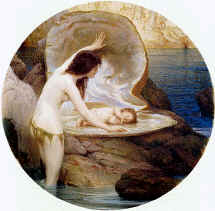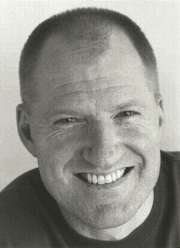
Gotu kola is an herbal remedy used to ease anxiety and treat mental fatigue and insomnia. Learn about the usage, dosage, side-effects of Gotu kola.
Botanical Name:Centella asiatica
Common Names:Centella, March Pennywort, Indian Pennywort, Hydrocotyle, Brahmi (Sanskrit), Luei Gong Gen (Chinese)(Note: Gotu kola should not be confused with kola nut.)
Overview
Gotu kola has been used as a medicinal herb for thousands of years in India, China and Indonesia. Its ability to heal wounds, improve mental clarity, and treat skin conditions such as leprosy and psoriasis were important reasons for its extensive use in these countries. It has also been called one of the "miracle elixirs of life" because legend has it that an ancient Chinese herbalist lived for more than 200 years as a result of using the herb.
Historically, gotu kola has also been used to treat mental fatigue, syphilis, hepatitis, stomach ulcers, epilepsy, diarrhea, fever, and asthma. Today, American and European herbalists use gotu kola for disorders that cause connective tissue swelling, such as scleroderma, psoriatic arthritis (arthritis occurring in conjunction with psoriasis), anklylosing spondylitis (arthritis of the spine), and rheumatoid arthritis. Recent studies confirm some of the traditional uses and also suggest possible new applications for gotu kola, such as lowering high blood pressure, treating venous insufficiency (pooling of blood in the veins, usually in the legs, boosting memory and intelligence, easing anxiety, and speeding wound healing.
Gotu kola should not be confused with kola nut (Cola nitida). Kola nut is an active ingredient in Coca Cola and contains caffeine. Gotu kola has no caffeine, and is not a stimulant.
Plant Description
Gotu kola is a perennial plant native to India, Japan, China, Indonesia, South Africa, Sri Lanka, and the South Pacific. It is a tasteless, odorless plant that thrives in and around water. It has small fan-shaped green leaves with white or light purple-to-pink flowers and it bears small oval fruit. The leaves and stems of the gotu kola plant are used for medicinal purposes.
Medicinal Uses and Indications
Treatment
Wound Healing and Skin Lesions
Gotu kola contains triterpenoids, compounds that have been shown to aid in wound healing. For example, animal studies indicate that triterpenoids strengthen the skin, increase the concentration of antioxidants in wounds, and restore inflamed tissues by increasing blood supply. Because of these properties, gotu kola has been used externally for burns, psoriasis, prevention of scar formation following surgery, recovery from an episiotomy following vaginal delivery of a newborn, and treatment of external fistulas (a tear at or near the anus).
Venous Insufficiency and Varicose Veins
When blood vessels lose their elasticity, blood pools in the legs and fluid leaks out of the blood vessels, causing the legs to swell (venous insufficiency). In a study of 94 people with venous insufficiency, those who took gotu kola reported a significant improvement in symptoms compared to those who took placebo. In another study of people with varicose veins, ultrasound examination revealed improvements in the vascular tone of those who took gotu cola.
High Blood Pressure
In a study of people with heart disease and high blood pressure, those who took abana (an Ayurvedic herbal mixture containing gotu kola) experienced a significant reduction in diastolic blood pressure (pressure on blood vessels when the heart is at rest) compared to those who took placebo. Further studies are needed to determine whether gotu kola alone, some other herb in the Ayurvedic mixture, or the particular combination of all the herbs in the remedy is responsible for the beneficial effect.
Gotu kola for Anxiety
Triterpenoids (active compounds in gotu kola) have been shown to soothe anxiety and boost mental function in mice. A recent study found that people who took gotu kola were less likely to be startled by a novel noise (a potential indicator of anxiety) than those who took placebo. Although the results of this study are somewhat promising, the dose used in this study was extremely high, making it difficult to draw any conclusions about how gotu kola might be used by people with anxiety.
Scleroderma
One study involving 13 females with scleroderma found that gotu kola decreased joint pain, skin hardening, and improved finger movement.
Insomnia
Because of sedative effects demonstrated in animals, gotu kola has been used to help people with insomnia.
Dosage and Administration
Gotu kola is available in teas, as dried herbs, tinctures, capsules, tablets, and ointments. It should be stored in a cool, dry play and used before the expiration date on the label.
Pediatric
There is currently no information in the scientific literature about the use of gotu kola for children. Therefore, it is not recommended for those under 18 years old.
Adult
The adult dosage of gotu kola may vary depending on the condition being treated. An appropriately trained and certified herbalist, such as a naturopath, can provide the necessary guidance.
The standard dose of gotu kola varies depending on the form:
- Dried herb—to make tea, add ¼ to ½ tsp dried herb to a cup of boiling water (150 mL) for 10 minutes, 3 times a day
- Powdered herb (available in capsules)—1,000 to 4,000 mg, 3 times a day
- Tincture (1:2, 30% alcohol)—30 to 60 drops (equivalent to 1.5 to 3 mL - there are 5 mL in a teaspoon), 3 times a day
- Standardized extract—60 to 120 mg per day; standardized extracts should contain 40% asiaticoside, 29% to 30% asiatic acid, 29% to 30% madecassic acid, and 1% to 2% madecassoside; doses used in studies mentioned in the treatment section range from 20 mg (for scleroderma) up to 180 mg (in one study for venous insufficiency; although, most of the studies for this latter condition were conducted using 90 mg to 120 mg per day).
The recommended dosage for people with insomnia is ½ tsp of dried herb in a cup of water taken for no more than 4 to 6 weeks.
Precautions
The use of gotu kola for more than 6 weeks is not recommended. People taking the herb for an extended period of time (up to 6 weeks) should take a 2-week break before taking the herb again.
Asiaticoside, a major component of gotu kola, has also been associated with tumor growth in mice. Though more studies are needed, it is wise for anyone with a history of precancerous or cancerous skin lesions—such as squamous cell, basal cell skin cancer, or melanoma—to refrain from taking this herb.
Side Effects
Gotu kola side effects are rare but may include skin allergy and burning sensations (with external use), headache, stomach upset, nausea, dizziness, and extreme drowsiness. These side effects tend to occur with high doses of gotu kola.
Pregnancy and Breastfeeding
Pregnant women should not take gotu kola because it may cause spontaneous abortion. There is little or no information regarding the safety of this herb during breastfeeding, so nursing mothers should refrain from taking this herb.
Pediatric Use
Gotu kola is not recommended for children.
Geriatric Use
People older than 65 years should take gotu kola at a lower than standard dose. The strength of the dosage can be increased slowly over time to reduce symptoms. This is best accomplished under the guidance of an appropriately trained and certified herbalist such as a naturopathic doctor.
Interactions and Depletions
There have been no reports documenting negative interactions between gotu kola and medications to date. Since high doses of gotu kola can cause sedation, individuals should refrain from taking this herb with medications that promote sleep or reduce anxiety.
Supporting Research
Antani JA, Kulkarni RD, Antani NJ. Effect of abana on ventricular function in ischemic heart disease. Jpn Heart J. Nov 1990: 829-835.
Anonymous. Centella asiatica (Gotu kola). Botanical Monograph. American Journal of Natural Medicine. 1996;3(6):22-26.
Belcaro GV, Rulo A, Grimaldi R. Capillary filtration and ankle edema in patients with venous hypertension treated with TTFCA. Angiology. 1990;41(1):12-18.
Bradwejn J, Zhou Y, Koszycki D, Shlik J. A double-blind, placebo-controlled study on the effects of Gotu Kola (Centella asiatica) on acoustic startle response in healthy subjects. J Clin Psychopharmacol. 2000;20(6):680-684.
Brinker F. Herb Contraindications and Drug Interactions. 2nd ed. Sandy, OR: Eclectic Medical Publication; 1998.
Brinkhaus B, Linder M, Schuppan D, Hahn EG. Chemical, pharmacological and clinical profile of the East Asian medical plant Centella asiatica. Phytomed. 2000;7(5):427-448.
Cauffield JS, Forbes HJM. Dietary supplements used in the treatment of depression, anxiety, and sleep disorders. Lippincotts Prim Care Pract. 1999:3(3):290-304.
DerMarderosian A, ed. Gotu Kola. In: Facts and Comparisons The Review of Natural Products. St. Louis, MO: Wolters Kluwer Co.: 1999:1-3.
Fetrow C, Avila J. Professional's Handbook of Complementary & Alternative Medicines. Springhouse, PA: Springhouse Corp.; 1999.
Gruenwald J, Brendler T, Jaenicke C, Fleming T, Deutsch M, Hamid M, eds. et al. PDR for Herbal Medicines. 1st ed. Montvale, NJ: Medical Economics Company, Inc..; 1998:729-731.
Kuhn M, Winston D. Herbal Therapy and Supplements: A Scientific and Traditional Approach. Philadelphia, Pa: Lippincott; 2001.
McCaleb R. Anti-Cancer Effects of Gotu Kola. HerbalGram. 1996;36:17.
McGuffin M, Hobbs C, Upton R, eds. American Herbal Products Association's Botanical Safety Handbook. Boca Raton, FL: CRC Press; 1997.
Miller LG, Murray W J, eds. Herbal Medicinals: A Clinician Guide. New York, NY: Pharmaceutical Products Press; 1998:217.
Peirce A. Practical Guide to Natural Medicines. New York: Stonesong Press Inc.; 1999:317-318.
Pointel JP, Boccalon H, Cloarec M, Ledevehat C, Joubert M. Titrated extract of centella asiatica (TECA) in the treatment of venous insufficiency of the lower limbs. Angiology 1987;38(1 Pt 1):46-50.
Russo E. Handbook of Psychotropic Herbs. New York, NY: Hawthorn Herbal Press; 2001.
Shukla A, Rasik AM, Dhawan BN. Asiaticoside-induced elevation of antioxidant levels in healing wounds. Phytother Res. 1999;13(1):50-54 [abstract].
 For the past 25 years, Dr. Richard Grossman has maintained a psychotherapy practice specializing in the treatment of people with relationship problems and general life dissatisfaction. Much of his work has focused on the "voiceless":adult children of narcissistic parents and people with narcissistic or self-absorbed spouses/partners. Prior to entering private practice, he taught and supervised in the internship and postdoctoral psychotherapy programs at Massachusetts General Hospital/ Harvard Medical School where he was on staff.
For the past 25 years, Dr. Richard Grossman has maintained a psychotherapy practice specializing in the treatment of people with relationship problems and general life dissatisfaction. Much of his work has focused on the "voiceless":adult children of narcissistic parents and people with narcissistic or self-absorbed spouses/partners. Prior to entering private practice, he taught and supervised in the internship and postdoctoral psychotherapy programs at Massachusetts General Hospital/ Harvard Medical School where he was on staff.



 Hello.
Hello.  If you are a physically active woman, you are at risk for the Triad. The competitive nature and strong discipline that can help make you a good athlete may also be part of the equation leading to this disorder. Competitive athletes may be at a higher risk than the more casual athlete due to a more rigorous training schedule and the "play-to-win" nature of their sports. You are particularly at risk if you participate in endurance sports, like cross-country running; aesthetic sports, like gymnastics or ballet; and sports which require formfitting uniforms, like swimming. The emphasis on a certain "look" and the perception that carrying less weight will universally improve performance lead to this risk.
If you are a physically active woman, you are at risk for the Triad. The competitive nature and strong discipline that can help make you a good athlete may also be part of the equation leading to this disorder. Competitive athletes may be at a higher risk than the more casual athlete due to a more rigorous training schedule and the "play-to-win" nature of their sports. You are particularly at risk if you participate in endurance sports, like cross-country running; aesthetic sports, like gymnastics or ballet; and sports which require formfitting uniforms, like swimming. The emphasis on a certain "look" and the perception that carrying less weight will universally improve performance lead to this risk. Amenorrhea:
Amenorrhea: